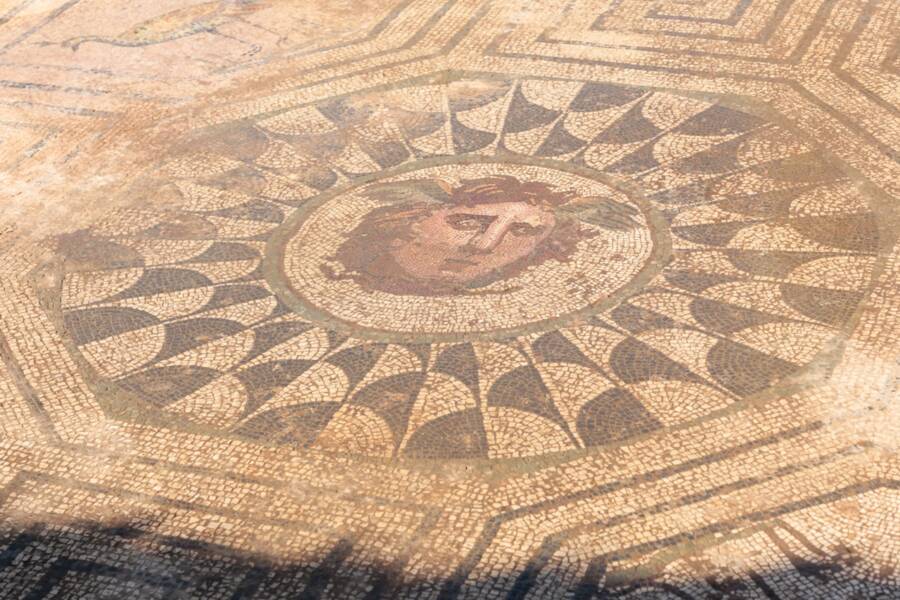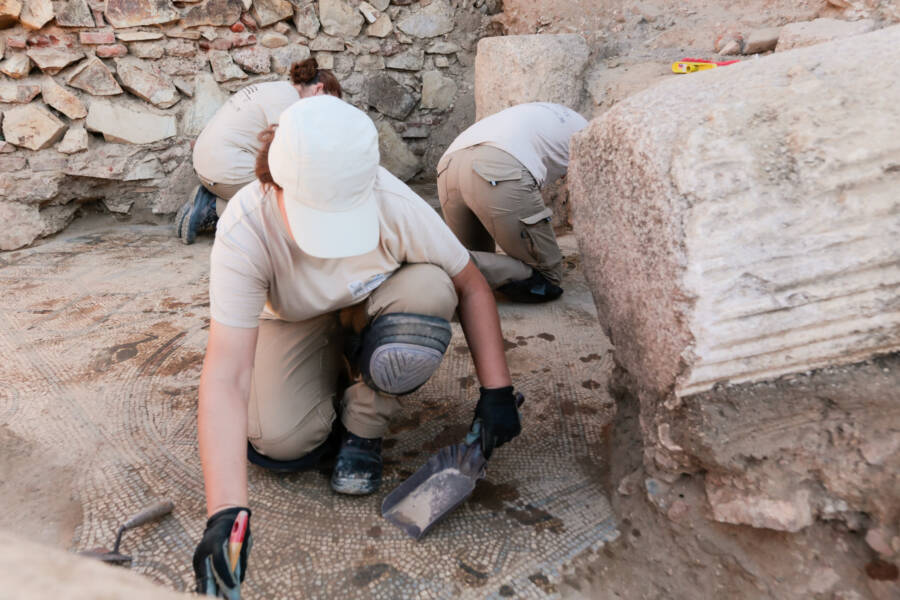The mosaic discovered in Mérida, Spain, is a stunning example of Roman craftsmanship likely from the second century.

Mérida City HallThe mosaic’s coloring suggests that it was made during the second century C.E.
While excavating the Huerta de Otero site in Mérida, Spain, archaeological students made a stunning discovery: an ancient Roman mosaic depicting the mythological gorgon Medusa.
“Excavations at the Huerta de Otero unveiled a large Medusa mosaic in the main living room of a splendid Roman domus,” Mérida City Hall announced on Facebook. “It is the result of the latest excavations being carried out by the students-workers of the Barraeca II Vocational School of the City Council.”
The 323-square-foot mosaic from the second century C.E. includes motifs like fish and peacocks, as well as the fearsome head of Medusa herself. According to a statement about the find, the peacocks represent the seasons, whereas the Medusa is a “prophylactic sign or protection of the inhabitants of the domus.”
As Newsweek notes, Medusa was one of the three Gorgons of ancient myth, sisters who had snakes for hair. As the legend goes, she was cursed by Athena (as the Greeks called her, or Minerva as the Romans called her) with the terrible power of turning anything she looked at into stone. Myth states that she was eventually killed by Perseus, who used her head as a weapon.

Mérida City HallThe Medusa mosaic is part of a lavish ancient Rome home that was discovered at Huerta de Otero in Mérida, Spain.
The depiction of Medusa in the Roman domus is typical of Roman art, according to Live Science. While the Greeks often depicted Medusa as hideous, with snake-like hair and pointy teeth, Romans gave her flowing locks and modeled her face after Alexander the Great. Live Science additionally reports that the fact that the mosaic is multi-colored suggests that its construction dates back to the second century.
Félix Palma, the director of the Monumental City Consortium, noted that excavations at the Huerta de Otero site began in 1976, but only recently ramped up in 2019. The site, he said in the statement, “is of an exceptional nature due to the level of conservation of the remains and, above all, due to the ornamental apparatus that decorates the house.”
The Medusa mosaic likely decorated one of the grandest parts of the house, possibly the triclinium, or dining room, according to The History Blog.
As Newsweek reports, the Medusa mosaic is just one of many incredible finds that the archaeologists made at the Huerta de Otero site. They also uncovered a 130-foot-long section of Roman foundation wall, which, at 16 feet tall and nine feet wide, would have been a formidable deterrent to invaders. The archaeologists additionally discovered the remains of a fourth-century Roman road running that once ran parallel to the wall.
The discovery of the Medusa mosaic is doubly exciting because it was found by young student archaeologists from the Barraeca II Professional School of the City Council. Both they and professional archaeologists will continue to excavate the site at Huerta de Otero in hopes of making new discoveries.

Mérida City HallIn addition to the Medusa mosaic, archaeologists also uncovered remains of a Roman wall and a road that once ran parallel alongside it.
As the site has been largely forgotten for hundreds of years, that’s an important goal. And administrators are looking forward to preserving the incredible Roman artifacts at Huerta de Otero so that they can be enjoyed by the public for generations to come.
The archaeologists who first dug at Huerta de Otero, Palma noted, “rescued that site from memory.” He added: “[N]ow the challenge is to value it so that people can enjoy it.”
After reading about the incredible Medusa mosaic discovered in Spain, see how a priceless mosaic from Caligula’s “party ship” spent almost 50 years as a coffee table in New York. Or, read about the incredible 2,000-year-old Roman mosaic discovered in the shadow of the Shard in Central London.





